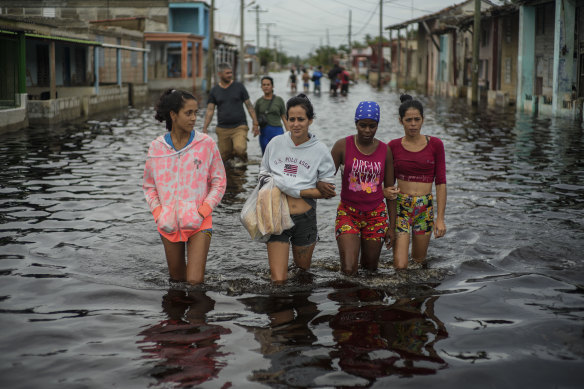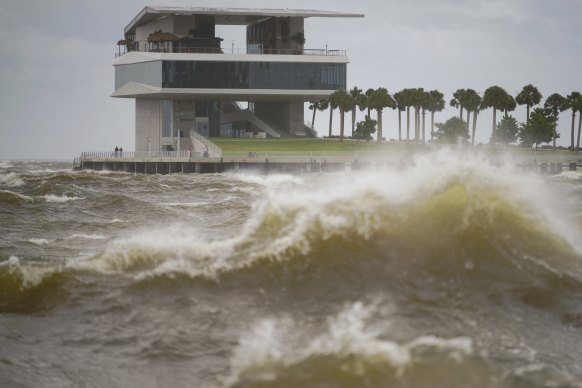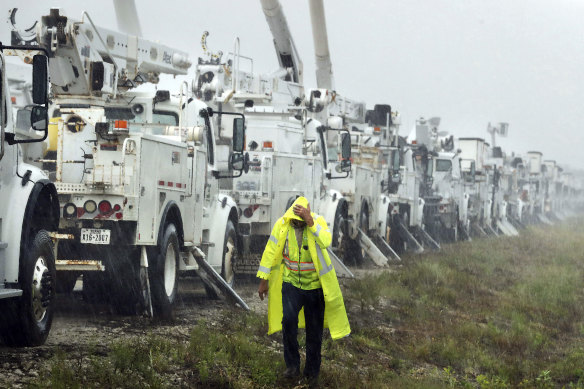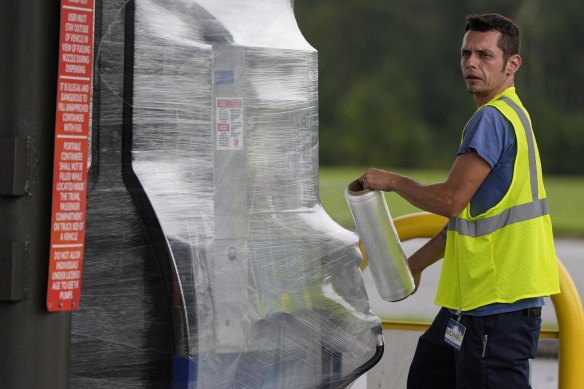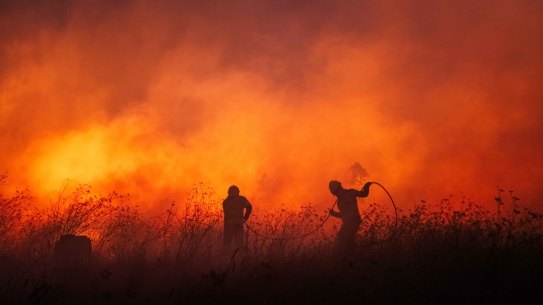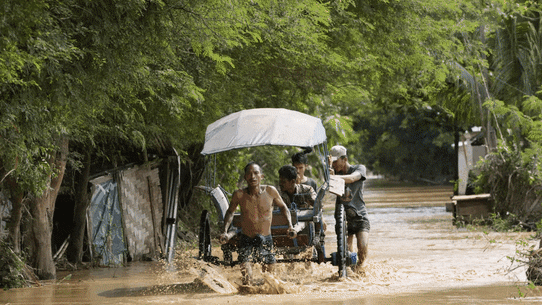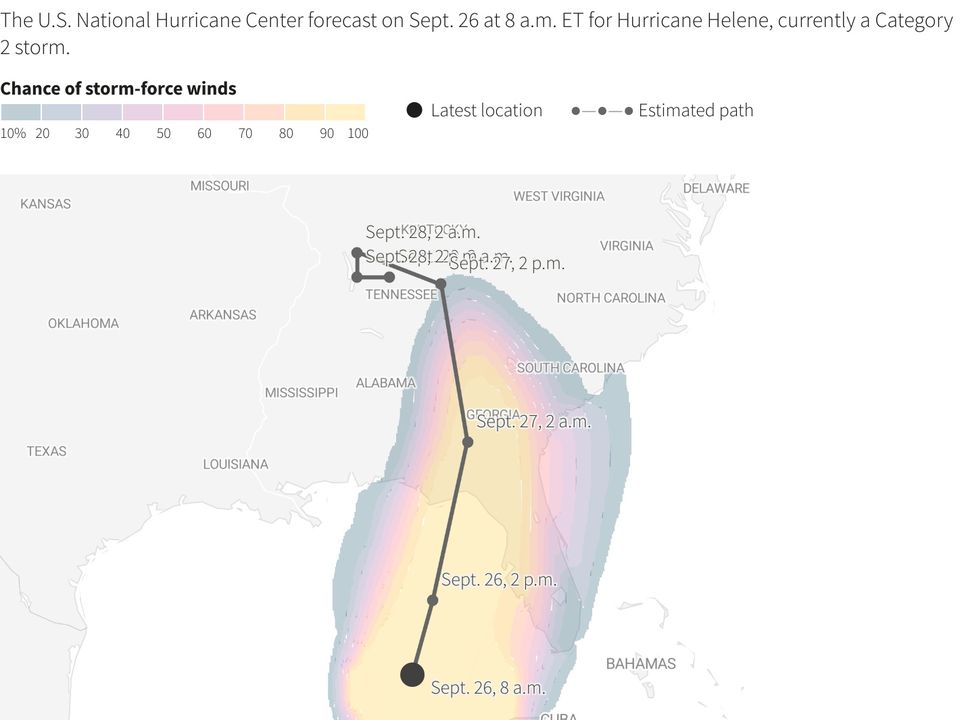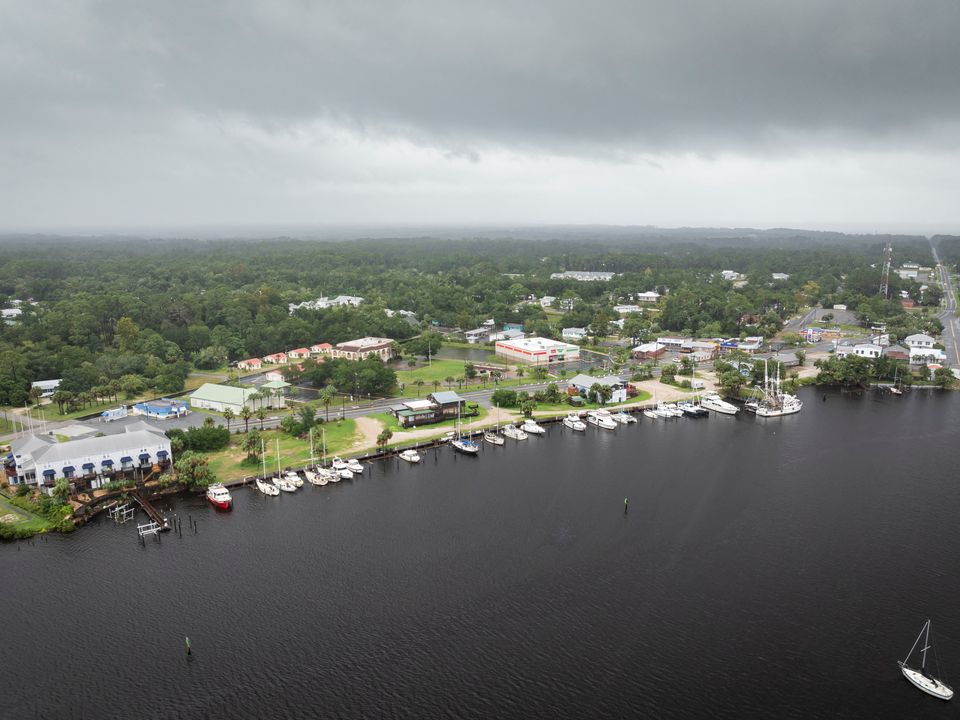AMS Science Preview: Turbulence & thunderstorms, heat stress, future derechos
Early online research from journals of the American Meteorological Society
American Meteorological Society
The American Meteorological Society continuously publishes research on climate, weather, and water in its 12 journals. Many of these articles are available for early online access–they are peer-reviewed, but not yet in their final published form.
Below is a selection of articles published early online recently. Some articles are open-access; to view others, members of the media can contact kpflaumer@ametsoc.org for press login credentials.
JOURNAL ARTICLES
A New Heat Stress Index For Climate Change Assessment
Bulletin of the American Meteorological Society
Heat Index may dramatically underestimate heat stress in extreme temperatures. This work compares the Heat Index (HI), developed to measure heat stress on the human body, to a recently developed Extended Heat Index (EHI) that aims to function better for the kind of extreme humid heat that is becoming more common with climate change. The study finds that during extreme heat waves, “the original [Heat Index] can underestimate heat stress by a considerable amount” (5-10°C) compared to the EHI.
Lengthening Atlantic Hurricane Seasons with Earlier Storm Formation Dates Including Implications from 2020
Journal of Climate
Atlantic hurricane season is lengthening. A statistical analysis of Atlantic hurricane seasons indicates a statistically significant lengthening trend since the 1970s. This is primarily due to more storms forming earlier in the year. “Since the early 1970s, dates for the earliest storms have trended earlier, the last storm’s dissipation dates later, and seasons correspondingly longer,” the authors write.
Spatial Patterns of Turbulence near Thunderstorms
Bulletin of the American Meteorological Society
Thunderstorms cause flight turbulence up to 100 km away. A new study examining radar data and airline reports finds that turbulence risk is up to five times higher than normal within 32 km of a radar-identified storm at flight altitude, and twice as high 70 km away. Elevated risk was found up to 100 km away from a storm. In addition, when flying over a storm, turbulence risk was up to 20 times higher than normal, and never completely dissipated at any height.
Future Derecho Potential in the United States
Journal of Climate
Derechos to increase, intensify in central, eastern U.S. under future climate. Derechos, and other windstorms driven by thunderstorm systems, are due to increase according to the authors’ high-resolution climate simulations. With both intermediate and pessimistic future greenhouse gas concentrations, models suggest increased frequency, intensity, and geographic spread of MCS-driven windstorms across the central and eastern contiguous United States.
Changes in Extreme Daily Precipitation over the Contiguous United States from Convection-Permitting Simulations
Journal of Applied Meteorology and Climatology
Precipitation extremes to shift across continental U.S. cities, model suggests. A model shown to “admirably” model historical precipitation extremes (the highest 1% of daily rainfall events) found statistically significant increases in these events during winter and spring across the Midwest and Ohio Valley, and decreases in such events during the winter for the southern Great Plains by the end of the century. The authors also found increasing variability in extremes across several U.S. cities, including Seattle, Phoenix, and Minneapolis.
Delayed Impact of Biomass Burning in the Indochinese Peninsula on the Bay of Bengal Monsoon
Journal of Climate
Biomass burning on the Indochinese Peninsula may delay monsoon onset in the Bay of Bengal. A modeling study suggests that aerosols from fires on the Indochinese Peninsula can reduce the amount of solar radiation reaching the ocean’s surface, creating a cooler area that suppresses convection and certain atmospheric flows. According to the model, this could lead to a delayed monsoon onset in the Bay of Bengal.
The Efficacy of Red Flag Warnings in Mitigating Human-Caused Wildfires across the Western United States
Journal of Applied Meteorology and Climatology
Red flag warnings have limited usefulness for reducing human-caused wildfire ignitions. National Weather Service red flag warnings (RFWs) denote weather conditions conducive to extreme wildfires. Examining data from the Western United States, the authors found some evidence to support the idea that fewer people engaged in activities like debris burning on red flag days, while the warnings had no impact on habitual behaviors like smoking, or the incidence of fires caused by infrastructure issues (e.g., power lines).
Burn Period: A use-inspired metric to track wildfire risk across Arizona and New Mexico in the southwest U.S.
Journal of Applied Meteorology and Climatology
“Burn period” tracks time windows for wildfire-inducing conditions. A new tool, the Burn Period Tracker, formalizes a term used by wildland fire managers. Burn period (the number of hours each day with atmospheric humidity below 20%) tracks well with fire weather conditions in the U.S. Southwest and allows for improved short-term planning around fire risk.
Projected effects of climate change on meteorological droughts over China: A study based on high-resolution NEX-GDDP data
Journal of Hydrometeorology
Droughts to increase in China under future climate scenarios. The authors’ analysis suggests that moderate and extreme droughts are projected to increase across China under moderate (RCP4.5) and worst-case (RCP8.5) atmospheric greenhouse gas scenarios, respectively.
You can view all research published in AMS Journals at journals.ametsoc.org.
AMS BLOG
Tornado damage risk is increasing across the U.S. (even where tornadoes aren’t); peer pressure presents campus tornado safety issues; and bilingual weather warnings are a lifeline for Spanish-speakers. The 31st Conference on Severe Local Storms took place October 20-25, 2024, and the first session dealt with societal risks and perceptions of severe storms. Read about some of the takeaways on the AMS Front Page Blog, including how weather warnings are evolving.
About the American Meteorological Society
The American Meteorological Society advances the atmospheric and related sciences, technologies, applications, and services for the benefit of society. Founded in 1919, AMS has a membership of around 12,000 professionals, students, and weather enthusiasts. AMS publishes 12 atmospheric and related oceanic and hydrologic science journals; hosts more than 12 conferences annually; and offers numerous programs and services. Visit us at www.ametsoc.org/.
About AMS Journals
The American Meteorological Society continuously publishes research on climate, weather, and water in its 12 journals. Some AMS journals are open access. Media login credentials are available for subscription journals. Journals include the Bulletin of the American Meteorolocial Society, Weather, Climate, and Society, the Journal of Climate, and Monthly Weather Review.
Journal
Journal of Climate




